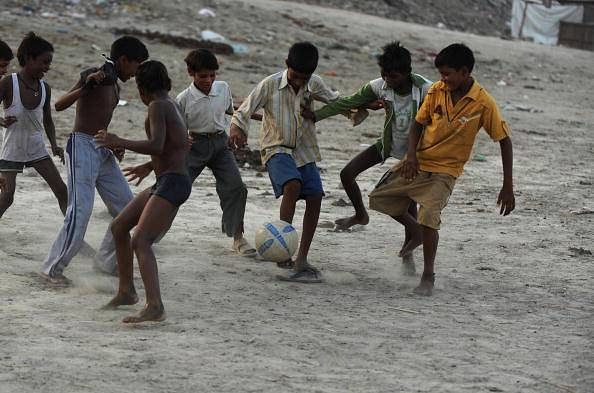
A pressing need for quality grassroot sports programs in India

The recent loss of the Indian football team to lowly-ranked Guam in the Asian 2018 World Cup Qualifiers was a bitter pill to swallow for a sports lover like myself. This loss must serve as a wake-up call for all stakeholders involved in the sporting development of the country, including coaches, administrators (Government and Federations), sponsors and fans of all sports in the country, not just football.
Why should this be a wake-up call? Let us look at the context of the loss. Guam is a country of 1.6 lakh people, smaller than all metros and most Tier-2 cities in India. Also, they are ranked 174th in the FIFA world rankings.
But more worrying is the amount of investment being made in Indian football over the past 5-7 years by AIFF (All India Football Federation), which has yet to show any dividends, and might never do so.
Several people ask the question, “How can a country with a population of 1.25 billion lose to a country with a population of 160,000?” The simple answer: the quality and effectiveness of grass-root development programs that are in place. In India, these development programs in sport are of either poor quality, inadequate or simply missing, especially in the hinterlands.
Being involved in grass-root programs in rural India over the past three years, I have seen the sporting talent and athletic ability that the country possesses. But we need programs, starting right at the bottom of the chain, to support this talent to shine as athletes, coaches, mentors and administrators in India’s sporting ecosystem.
Developing a sporting culture
What can be done to bring about a change? In my humble opinion, there are a few measures that can be taken to put India on the right path of developing a sporting culture at the grassroots, which in turn will promote sustainable participation and excellence in sports.
Firstly, all sporting bodies in India, Government, and private federations, right from block level to national level, must take a long-term view to the development of Indian sport. India needs at least a minimum of 10-15 years to inculcate a sporting culture and compete with the best sporting nations of the world if the right measures are taken.
All stakeholders must understand that this cannot happen overnight, and it will take some time to introduce strong development measures at the grassroots. For example, AIFF should target the national team’s qualification to the FIFA World Cup Finals in 2026, and convey this clearly to all its stakeholders so that their expectations are aligned.
Secondly, all investments made into Indian sport by private and public bodies, must include a larger chunk to the beginning of the chain. This means that India as a country needs to invest more money into sport at the grassroots, especially the rural regions (this should be a priority of the sports ministry), to help set up structured, quality development programs that focus on two types of initiatives – Sport for All (For example, Physical Education programs) and nurturing talent (For example, Talent ID and development programs). Moreover, these programs need to be introduced on a much larger scale to unearth talent from all corners of the country, and not just bigger cities and metros.
Having a sporting infrastructure in place
Thirdly, adequate sporting infrastructure and human resources need to be developed at the grassroots. I feel that this needs to be championed by the central and state governments, with the involvement of private players.
Only the governments have the necessary resources to invest in the development of infrastructure and human resources at the grassroots in India, especially at such a large scale, given India’s size and scope.
But, it is the private players in India who possesses the know-how to ensure the effective development of such infrastructure and human resources, which is why their involvement is necessary and important.
The idea must be to develop quality, sustainable and cost-effective infrastructure starting from the Block level, which allows participation as well as excellence in sport. This is, as you can imagine, easier said than done.
Furthermore, there must be a long-term plan to develop human resources within the Indian sporting ecosystem, important in creating a sporting culture at the grassroots as well as producing quality talent, including Physical Education teachers, sport specific coaches, fitness trainers, nutritionists, physiotherapists, psychologists, sports scientists, managers and administrators.
Courses and colleges need to be established to adequately skill these individuals in the aforementioned areas. But, the continuing professional development of these personnel, including refresher courses and workshops, as well as focus on practical learning, will be important in continuing to produce a quality workforce.
All stakeholders should come together
Finally, all the different stakeholders in Indian sport must come together and work towards the common goal of establishing a sporting culture in the country, and developing a framework to support talented athletes, right from the grassroots to elite levels.
For this to happen, all policies, programs and projects must be centered around the athletes. They are the most important cog of this wheel, and must be put to the forefront of our thinking, which is currently seldom done. The stakeholders in Indian sport must put aside their differences, and support each other in providing pathways for young talent to be groomed.
There is a long and challenging path ahead for India to become a sporting nation. But, it is very much possible, if the right plans are put into motion. The focus must be on developing sport at the grassroots and rural regions of the country, and long-term thinking must be adopted all levels of Indian sport. As the saying goes, “The path to success is a long one”.